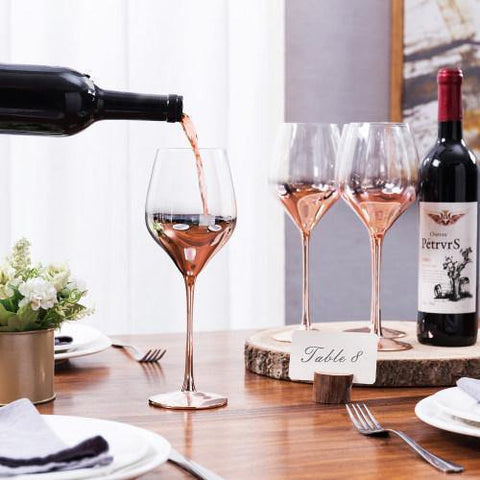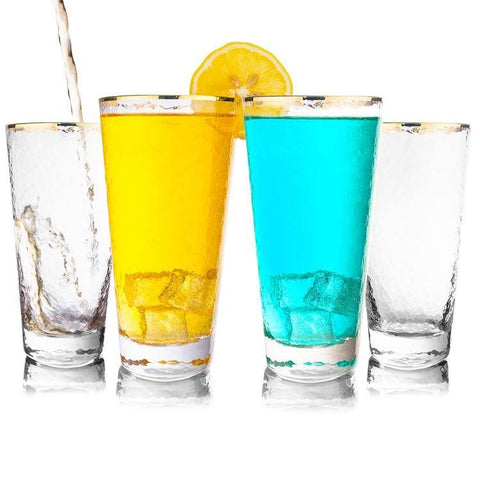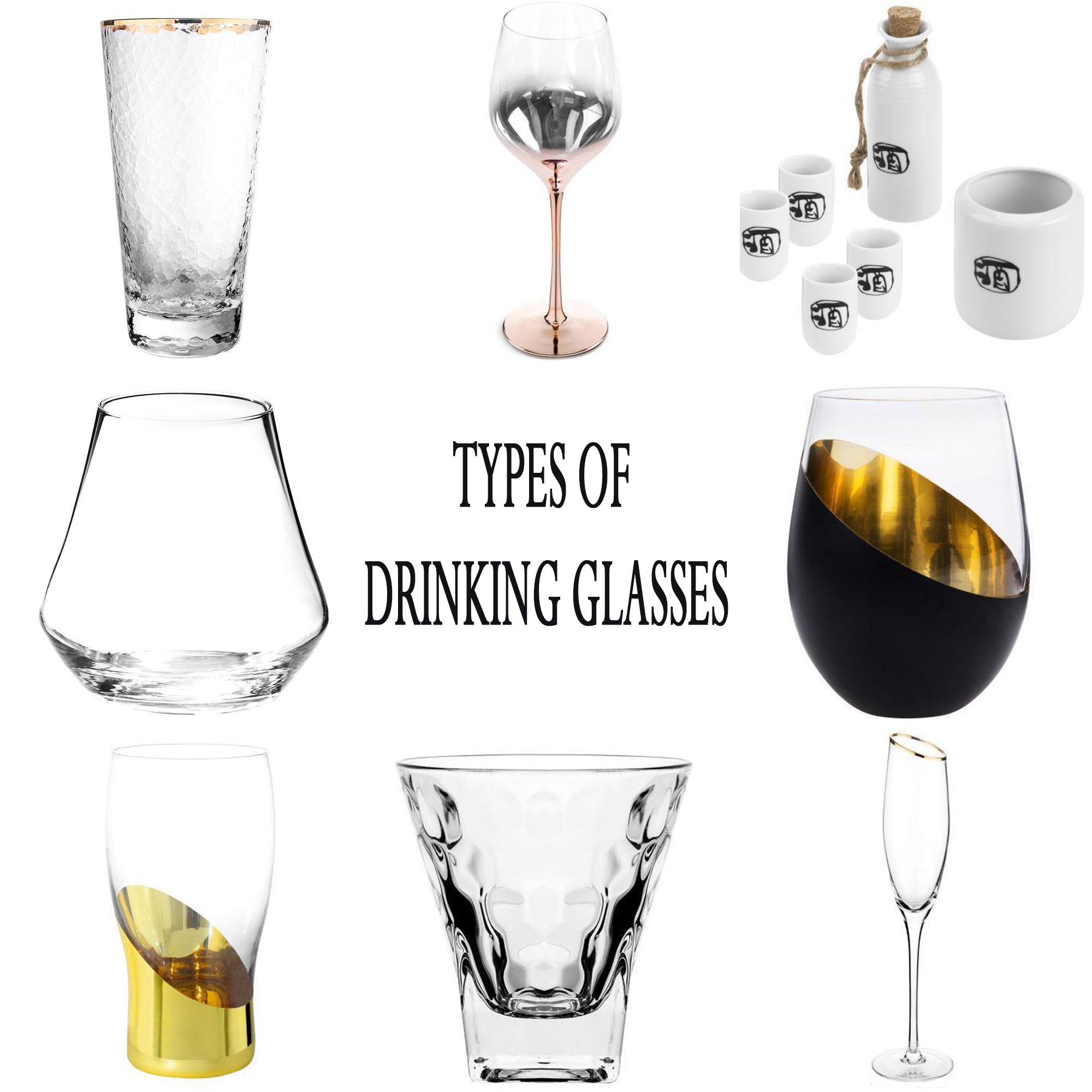If you are looking to have an elegant dinner party, stocking up your personal or restaurant bar, having the right glass for the right drink is as important as what you are serving in it. From wine, to beer, to cocktail and juice glasses it can all get confusing and a bit overwhelming. We’ve come up with a simple go-to guide to the types of drinking glasses to help you have the proper glass for the proper beverage making all the difference, aesthetically and for the drinking experience.
If you're looking to find out the types of drinking glasses and their uses, read on!
Red Wine

The main difference between a red and white wine glass is that red wine glasses tend to be larger openings and bowls to allow air to come in contact with the wine and allow oxidization to help release aromas and flavors. Red’s are served at room temperature and the large bowl allows for surface area to keep the wine at the proper temperature.
White Wine

Since white wines are usually served chilled, a smaller and narrower wine glass is used to allow less air and temperature to encounter the wine, keeping them cooler longer.
Sake

The traditional way to enjoy both hot or cold sake, is in Ochoko cups and poured from a flask or carafe. Sometimes included in a sake set is a warmer to keep your sake warm or a corked bottle to keep sake cold. Sake is to be enjoyed a sip at a time and you are meant to serve your friends and your friends serve you.
Rocks

Often referred to as low-ball or old fashioned glasses, is a common glass for muddled cocktails, spirits on the rocks, and sometimes juices. They bottom heavy glasses so they don’t easily tip over and a wide mouth allow beverages to be sipped or finished in one gulp.
Tumblers

The most commonly used beverage glass is a tumbler glass. Used for anything from water to cocktails and is typically a taller slightly tapered style glass and holds between 6 or 8 oz.
Flute Glass

The instantly recognizable champagne glass is ideal for toasts, parties, New Years Eve, and brunch beverages. Great for champagnes, prosecco, sparkling wines or even bubbly cocktails such as mimosas or bellinis. The tall, thin and small mouth, and small surface area of a flute glass helps preserve the bubbles
Beer Glass

This list could go on and on from lagers to pilsners to IPAs and stouts, so here is a quick guide to the typical beer glasses. A classic pint glass can be the easiest way to serve the majority of beer you are about to enjoy.
Brandy / Snifter

Perfect for enjoying darker liquors such as whiskey and brandy, snifter glasses are ideal for being able to fit perfectly in your hand to slightly warm the contents. A large bowl with tapered mouth allows you to swirl the liquid to let hair in, but trap the aromas, allowing you to smell your drink as you sip. These can even be used for aromatic IPAs or wheat wines.



